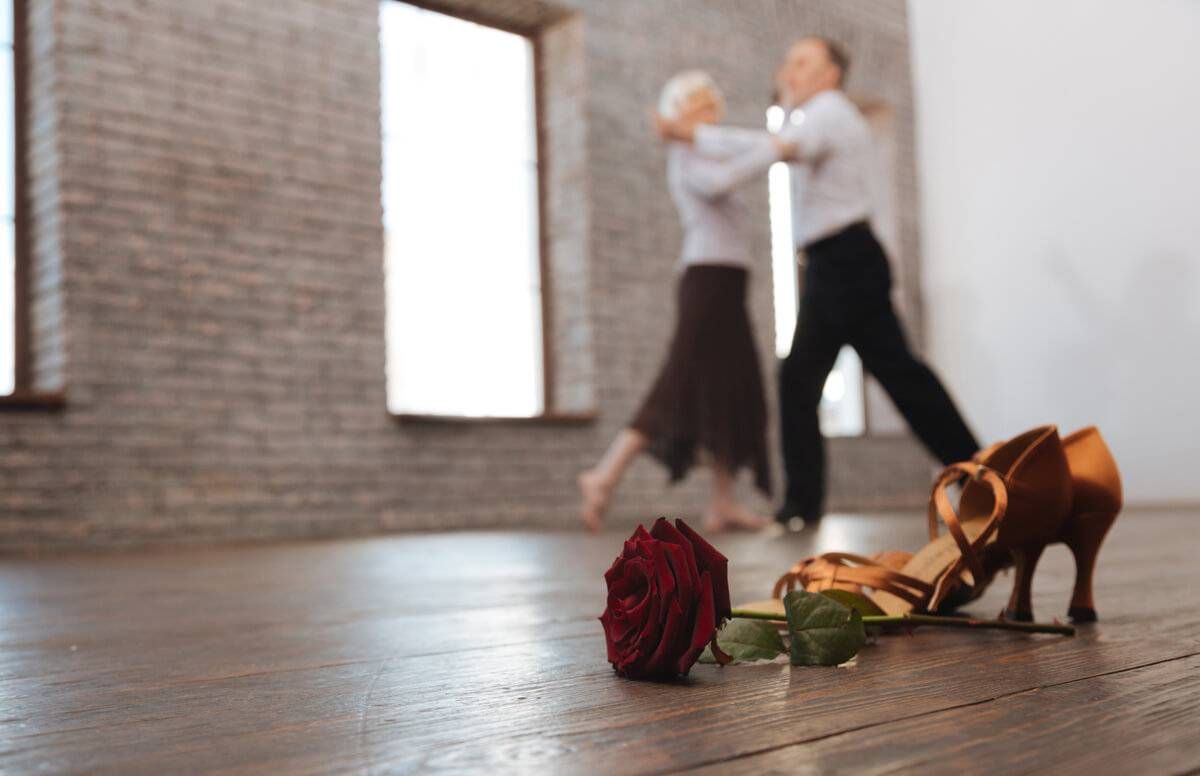Tango: Where Romance Is Ageless
Especially for those over 50, tango offers exercise and social connection
Sometimes you can pinpoint an exact moment that changed your life. In my case, it was an ad in the local newspaper that simply said: Free Tango Lesson. Barely divorced and rudderless, a single mother of three sons, I took a leap of faith and went. The moment I stepped on the dance floor I knew I wasn’t in Kansas anymore. Lured by the seductive Argentinean tango music, I still wanted to flee but instead I was quickly netted in the vortex of my tango journey.

Leap ahead two decades and not only am I still captivated by tango, but now I’m an ambassador. To me, tango is one of the last bastions of true romance and it’s particularly welcoming to those over 50 who have the maturity to appreciate tango’s moody, yet warm ways and who enjoy the dual benefits of exercise and social connection.
Tango is Accessible for Everyone
To be clear, Argentinean tango is slow and gentle and not to be confused with the more theatrical ballroom tango. Pretty much anyone can dance this tango. If you can walk, you can tango. In fact, even if you can barely walk, you can still tango.
One friend of mine has Parkinson’s and MS, others have replaced hips or knees, one is legally blind and has a cane and they all come to tango because, aside from its seductive reputation, tango heals body and soul.
Sherry, a slender woman in her early 50s from Montreal, is the sight-challenged dancer who comes by Uber and with a cane. She said, "I first came to tango because it was better than focusing on other, less positive things in my life. I soon forgot everything else in my life and became addicted to the music and the warm social friendships that develop."
Jay, a 50-something housewares rep also from Montreal, said, “If Dancing With the Stars can make 60-something ex-football players into dancers, then anyone can dance tango!"
When I began tango, my physicality was intact, but tango was still a healer. Newly single at 42, I was thrust into a new life without familiar moorings and tango revealed itself as a welcoming oasis. For one thing, at tango class, if you register on your own (as most people do), you’re given a partner. Tango studio organizers maintain an equal ratio of men to women or in a non-gender bias ratio in terms of equal proportion of leaders and followers. In a class, you regularly switch partners so as to better learn the steps with anyone.
Accustomed to dancing and relaxing with many different people, my cobwebs of self-consciousness were magically dusted away.
Tango also insisted I abandon my oft-told divorce tale, since you can’t really talk about profound things as you dance. Consequently, you are kept totally present.
Power of Connection
But I also noticed something else at tango that is probably at its core: it both awakens one’s primal need to be touched or held or it slakes it — it is the safest sex I know, as well as an evergreen, never-ending romance that begins with each new set of dances.
Each new partnership is a three-minute relationship that brings another experience of communication. To an outside observer, the physical connection appears sensuous, but it is truly about that baseline human resonance. That is something we all crave. And once experienced, it breeds an addiction to more of the same, which explains why, as Paul (a documentary filmmaker from Montreal) said, "Tango, for most people, is once or terminal.”
Michel Cyr, who works in economic development in Montreal, agreed: "Tango is the only dance I know that allows two strangers to experience such a deep emotional connection in just a few seconds”.
Adds Jennifer, 57, a graphics artist from Montreal: “You never really know someone until you dance with someone. But once you connect to something in them that connects with something in you, that is beyond a casual chat and it’s an intimate conversation. Once in the embrace, a barrier is breached and there’s always the possibility or surprise of resonance. You never know who it will happen with."
Many of the tango dancers I’ve spoken to emphatically agree about the abrazo (the embrace) which is as unique as their fingerprint. Find a perfect or simpatico embrace and while this might not be a new relationship, you’ll experience an intimacy of human accord that has an innate gravitational pull.
Andrea Shepherd, a tango teacher and yoga teacher who owns Mon Tango studio in Montreal with her husband, said, “Tango looks so intense to outsiders and it is, but it’s not sexual. It also allows you to let go mentally and have these unique, if brief, connections with different people. That keeps me coming back, plus I am always improving my skill level."
The Tonic of Tango
In a time where Face Time is anything but, and couples sit in Starbucks communing with their smart phones, disconnection is the malaise of the times. In contrast, there’s the tonic of tango which defies today's socio-culture. (As a bonus, just browse stories extolling the virtues of dance and aging and add 10 health points).
But tango’s best kept secret is its sweet spot: it offers egalitarian romance music, movement and other warm bodies and has no age or time limit. It is unequivocally inclusive and embracive and (and this is no small thing) it will never quit you.
The moment someone says, “Shall we dance?” your heart sprouts wings and your soul comes home. So you might not meet your second spouse at tango, but you’ll reacquaint yourself with your original soulmate (you!) and fall back in love with life. You’ll be swept away to a world where you morph into something other than yourself or better yet, remember just who you are. And that is more than worth the price of admission.

